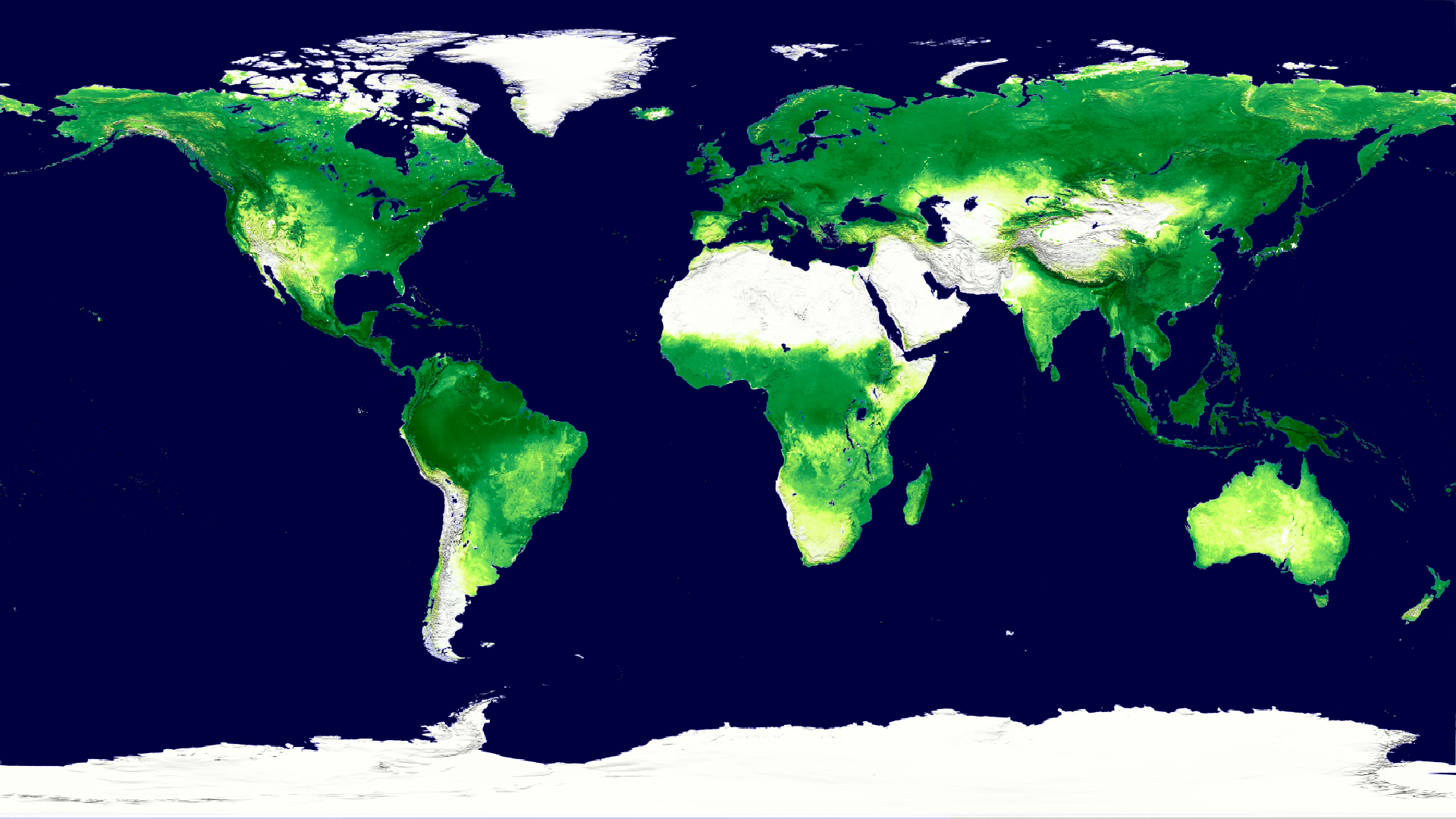Carbon Catch And Release
Through tiny, microscopic pores called stomata, plants absorb one hundred billion tons of carbon from the air each year and convert about half of that into organic matter—leaves, roots, tree branches, grass. As we continue to increase the level of carbon dioxide in the atmosphere, knowing exactly how much carbon Earth's plants absorb from the air—Gross Primary Productivity (GPP)—will become only more important. NASA has closely measured this since 2000, and that volume of absorption is seen in the first visualization below as waves of green. The northern hemisphere all the way up to the Arctic Circle swells with life each summer, before much of the vegetation wilts and exhales its carbon in fall and winter. Meanwhile, forests such as the Amazon, a robust green throughout, show off their amazing productivity despite seasonal changes.

Nine years of GPP data reveal temperate seasonal patterns and constant productivity in equatorial rain forests.
The same data set highlights how major U.S. cities appear as white patches in the midst of otherwise lush, green land cover.
Abundant light, rainfall and warmth make the tropical forests of Central Africa one of the most productive regions in the world.

NASA's versatile MODIS instruments, on the Terra (pictured) and Aqua satellites, make these GPP measurements.
Credits
Please give credit for this item to:
NASA's Goddard Space Flight Center Scientific Visualization Studio
-
Animator
- Horace Mitchell (NASA/GSFC)
-
Producer
- Michelle Williams (UMBC)
-
Scientists
- Maosheng Zhao (University of Montana)
- Steven W Running (University of Montana)
-
Writers
- Adam P Voiland (Wyle Information Systems)
- Patrick Lynch (Wyle Information Systems)
- Kayvon Sharghi (USRA)
Release date
This page was originally published on Friday, June 24, 2011.
This page was last updated on Wednesday, May 3, 2023 at 1:53 PM EDT.
